Maeve O'Meara explores the delicious and complex world of Jewish food, full of age-old traditions and customs including a strict dietary code (kashrut) laid out in the Old Testament. She visits kosher butcher shops and fish shops in Melbourne and Sydney, with food preparation supervised by a rabbi.
She samples sweet plaited bread challah and bagels; vibrant borscht (beetroot soup); golden Jewish penicillin—a.k.a. chicken soup; cholent—a slow-cooked dish of meat and pulses (legumens) that is perfect as a Sabbath dish; gefilte fish and beef brisket.
No Jewish home is ever without an endless array of baked goods including exceptional cakes, and Maeve samples a fragrant orange and almond cake, a recipe made without flour to commemorate the time when the Jews fled with Moses and didn't have time to bake.
Click here for the recipes featured in this episode.
About Israel
The State of Israel is a parliamentary republic in Western Asia, located on the eastern shore of the Mediterranean Sea. It borders Lebanon in the north, Syria in the northeast, Jordan and the West Bank in the east, Egypt and the Gaza Strip on the southwest. The State of Israel is roughly located on the site of ancient Jewish kingdoms which were the birthplace of Monotheism, Judaism and Christianity and contains sites sacred to all of the world's principal monotheistic religions. Israel is the world's only Jewish-majority state, and is defined as a Jewish and democratic state in its Basic Laws.
The Jews were mostly driven out of the country by the Romans over the course of centuries of conflict, although some Jews remained. In the Middle-Ages, the area formed the focal point of conflict between Christianity and Islam. The expulsion of the Jews from Spain led to an increased, though still small, Jewish presence. In modern times, persecution in Europe led to the creation of the Zionist movement, which was able to win international support.
The State of Israel declared independence on May 14, 1948 after almost two millennia of Jewish dispersal and persecution around the Mediterranean. From the late 19th century the Zionist movement worked towards the goal of recreating a homeland for the Jewish people. Israeli independence has been marked by massive immigration of Jews, by conflict with the Palestinians and by wars with neighboring Arab states.
Ancient Israel
Israel and Judah were related Iron Age kingdoms of the ancient Southern Levant, an area roughly encompassed by Palestine, the West Bank, the Gaza Strip, along with the modern sovereign states of Israel, Jordan and the southern part of Lebanon. The sources for the history of ancient Israel and Judah can be broadly divided into the biblical narrative (essentially the Hebrew Bible, but also Deuterocanonical and non-biblical works for the later period) and the archaeological record. The latter can again be divided between epigraphy (written inscriptions, both from Israel and other lands including Mesopotamia and Egypt) and the material record (everything else).
Tribes of Abraham:
According to the Hebrew Bible, Terah's father was Nahor, son of Serug, descendants of Shem, who was one of Noah's three sons. They and many of their ancestors were polytheistic. Terah had three sons: Abram, Haran, and Nahor. The entire family, including grandchildren, lived in Ur of the Chaldees (Ur Kasdim), a biblical place mentioned in the Book of Genesis. Chaldea was a marshy land about the estuaries of the Tigris and Euphrates located in the southern portion of Babylonia—now modern-day southern Iraq. Semitic tribes of settlers who arrived in the region from the 8th Century BCE became known as the Chaldeans or the Chaldees.
The original homeland of the Chaldean race was in the far south east of Mesopotamia. It is not certain from where they migrated at an unknown period into the country, but they seem to have appeared there at about the same time that the Arameans (descendants of Aram, one of the five sons of Shem) and the Sutu appeared in Babylonia. Though belonging to the same ancient "Semitic" ethnic group, the ancient Chaldeans are to be differentiated from the Aramean stock.
The short lived 11th dynasty of the Kings of Babylon (6th century BCE) is conventionally known to historians as the Chaldean Dynasty, although only the first four rulers of this dynasty were known to be Chaldeans, and the last rulers were not. Though conquerors, the Chaldeans were rapidly and completely assimilated into the dominant Babylonian culture, and after the fall of Babylon in 539 BCE the term "Chaldean" was no longer used to describe a specific race of people, but rather a "socio-economic" class, regardless of ethnicity.
The language used by the Chaldeans was the Babylonian dialect of Akkadian. In late periods, both the Babylonian and dialects of Akkadian ceased to be spoken, and Aramaic took its place across Mesopotamia. Aramaic is a part of the Northwest Semitic group of languages, which also includes Canaanite languages such as Hebrew and Phoenician. During its 3,000-year written history, Aramaic served variously as a language of administration of empires and as a language of divine worship. It was the day-to-day language of Israel in the Second Temple period (539 BCE–70 CE), was the original language of large sections of the biblical books of Daniel and Ezra, was the language spoken by Jesus, and is the main language of the Talmud.
According to the Hebrew Bible, Terah's son, Abram, had an encounter with God who directed him to take the entire family to the land of Canaan. Canaan is a historical and biblical name roughly corresponding to the region encompassing modern-day Israel, Palestinian territories, Lebanon, and the western parts of Jordan. According to both the Hebrew Bible and the Qur'an, Abram, who later changed his name to Abraham, is the forefather of many tribes, including the Ishmaelites, Israelites, Midianites, Edomites, and others.
The Book of Genesis gives one of Abraham's grandsons as Jacob, whose name is changed to "Israel" after he successfully wrestled with an angel of God. Jacob's twelve sons became the ancestors of the Israelites, also known as the "Twelve Tribes of Israel" or "Children of Israel". Jacob and his sons had lived in Canaan but were forced by famine to go into Egypt for four generations until Moses, a great-great grandson of Jacob, led the Israelites back into Canaan in the "Exodus".
Since there is little or no archaeological or historical evidence to trace the Ancient Israelites prior to the 11th century BCE, scholars are reduced to discussing the historicity of the biblical accounts themselves. There have been over 200 attempts to match the biblical chronology to dates in history, but the most that can be said with some degree of certainty is that the standard Hebrew text of Genesis places Abraham in the earlier part of the second millennium BCE.
It is generally recognized by scholars that there is nothing in the Genesis stories that can be related to the history of Canaan of the early 2nd millennium. Joseph Blenkinsopp, Emeritus Professor of Biblical Studies at the University of Notre Dame, notes that the past four or five decades have seen a growing consensus that the Genesis narrative of Abraham originated from literary circles of the 6th and 5th centuries BCE as a mirror of the situation facing the Jewish community under the Babylonian and early Persian empires.
Blenkinsopp describes two conclusions about Abraham that are widely held in biblical scholarship: the first is that, except in the triad "Abraham, Isaac and Jacob," he is not clearly and unambiguously attested in the Bible earlier than the Babylonian exile (he does not, for example, appear in prophetic texts earlier than that time); the second is that he became, in the Persian period, a model for those who would return from Babylon to Judah. Beyond this the Abraham story (and those of Isaac and Jacob/Israel) served a theological purpose following the destruction of Jerusalem, the Temple and the Davidic kingship: despite the loss of these things, Yahweh's dealings with the ancestors provided a historical foundation on which hope for the future could be built.
Similarly, the central founding myth of the Israelite nation surrounds the exit from Egypt under the guidance of Moses. The Exodus cannot be established as historical, but Jewish tradition places it in the 14th century BCE.
The earliest archaeological artifact to mention the word "Israel" is the Merneptah Stele, an ancient Egyptian record of 1209 BCE. Paula McNutt says, "It is probably safe to assume that sometime during Iron Age I (1300-1000 BCE) a population began to identify itself as 'Israelite'", differentiating itself from the Canaanites through such markers as the prohibition of intermarriage, an emphasis on family history and genealogy, and religion.
According to the Bible, before the united monarchy, the Israelite tribes lived as a confederation under ad hoc charismatic leaders called Judges. In around 1020 BCE, under extreme threat from foreign peoples, the tribes united to form the first united Kingdom of Israel. Samuel anointed Saul from the tribe of Benjamin as the first king in 1020 BCE, but it was David who in 1006 BCE created a strong unified Israelite monarchy.
Under David's successor, Solomon, the United Monarchy experienced a period of peace and prosperity, and cultural development. Much public building took place, including the First Temple in Jerusalem. However, on the succession of Solomon's son, Rehoboam, in c. 930 BCE the country split into two kingdoms: the northern Kingdom of Israel with its capital Samaria and the southern Kingdom of Judah with its capital Jerusalem. For the first sixty years, the kings of Judah tried to re-establish their authority over the northern kingdom, and there was perpetual war between them.
In 732 BCE, Pekah of the Kingdom of Israel allied with Rezin of the Kingdom of Aram and threatened Jerusalem. Ahaz of the Kingdom of Judah appealed to Tiglath-Pileser III of the Assyrian Empire for help and paid tribute to the Assyrian king. Tiglath-Pileser sacked Damascus and Israel, annexing Aram and large parts of Israel. Both the biblical and Assyrian sources speak of a massive deportation of the people of Israel, thus creating the "Lost Tribes of Israel", and their replacement with an equally large number of forced settlers from other parts of the Assyrian empire—such population exchanges were an established part of Assyrian imperial policy, a means of breaking the old power structure. Many Israelites also fled south to Jerusalem. The Samaritans claim to be descended from survivors of the Assyrian conquest. The former Kingdom of Israel never again became an independent political entity.
Babylonian, Persian and Greek Rule:
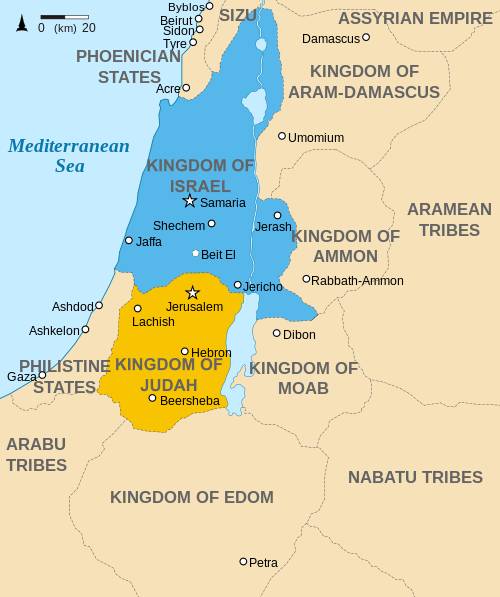 Due to its valuable olive industry, the Kingdom of Judah prospered under Assyrian vassalage, despite a disastrous rebellion against the Assyrian king Sennacherib, but when Josiah became king of Judah in 640 BCE, the international situation was in flux. To the east, the Assyrian Empire was beginning to disintegrate, the Babylonian Empire had not yet risen to replace it, and Egypt to the west was still recovering from Assyrian rule. In this power vacuum, Judah was able to govern itself for the time being without foreign intervention.
Due to its valuable olive industry, the Kingdom of Judah prospered under Assyrian vassalage, despite a disastrous rebellion against the Assyrian king Sennacherib, but when Josiah became king of Judah in 640 BCE, the international situation was in flux. To the east, the Assyrian Empire was beginning to disintegrate, the Babylonian Empire had not yet risen to replace it, and Egypt to the west was still recovering from Assyrian rule. In this power vacuum, Judah was able to govern itself for the time being without foreign intervention.
Then in the spring of 609 BCE, Pharaoh Necho II personally led a sizable army up to the Euphrates to aid the Assyrians. Presumably in an attempt to help the Babylonians, Josiah attempted to block Necho's advance at Megiddo, where a fierce battle was fought and where Josiah was killed. Necho appointed Josiah's son Jehoiakim the new king, and Judah became a vassal state of Egypt, paying a heavy tribute.
However, when the Egyptians were defeated by the Babylonians in 605 BCE, Jehoiakim changed allegiances, paying tribute to Nebuchadnezzar II of Babylon. But when in 601 BCE Nebuchadnezzar II unsuccessfully attempted to invade Egypt and was repulsed with heavy losses, Jehoiakim stopped paying tribute to Nebuchadnezzar II and took a pro-Egyptian position.
In 599 BCE, Nebuchadnezzar II laid siege to Jerusalem. Jehoiakim died during the siege and was succeeded by his son Jeconiah. Jerusalem fell and Nebuchadnezzar pillaged both the city and the Temple, carting all his spoils off to Babylon, along with prominent citizens and craftsmen. Reputedly 10,000 Jews were deported from the land and dispersed throughout the Babylonian Empire, among them was the prophet Ezekiel. Nebuchadnezzar appointed Zedekiah, Jehoiakim's brother, king of the reduced kingdom, which had now became a tributary state.
Despite the strong remonstrances of the prophet Jeremiah and others, Zedekiah revolted against Nebuchadnezzar II, ceasing to pay tribute to him and entered into an alliance with Pharaoh Hophra of Egypt. During this period, many Jews fled to surrounding countries to seek refuge. In 589 BCE, Nebuchadnezzar II returned to Judah and again besieged Jerusalem, conquering the city. After seeing his sons killed, Zedekiah was blinded, bound, and taken captive to Babylon, where he remained a prisoner until his death.
Jerusalem was plundered, Solomon's Temple was destroyed, and the city was razed to the ground. Most of the elite were taken into captivity in Babylon; only a small number of people were permitted to remain to tend to the land. Nebuchadnezzar appointed Gedaliah governor of the remnant of Judah, the Yehud Province, supported by a Chaldean guard, but Gedaliah was assassinated two months later, and a sizeable portion of the population that had remained, plus those who had returned, then fled to Egypt for safety. Jerusalem apparently remained uninhabited for much of the 6th century.
In 539 BCE, the Persian Cyrus the Great conquered Babylon and allowed the exiled Jews to return to Yehud and rebuild the Temple, which was completed in 515 BCE under Zerubbabel, the grandson of the second to last king of Judah, Jehoiachin. Yehud province was a peaceful part of the Achaemenid Persian Empire until the fall of the Empire in c. 333 BCE to Alexander the Great. Sometime thereafter, the first translation of the Hebrew Bible, the Septuagint, was begun in Alexandria. After Alexander's death, his generals fought over the territory he had conquered. Judah became the frontier between the Seleucid Empire and Ptolemaic Egypt, eventually becoming part of the Seleucid Empire.
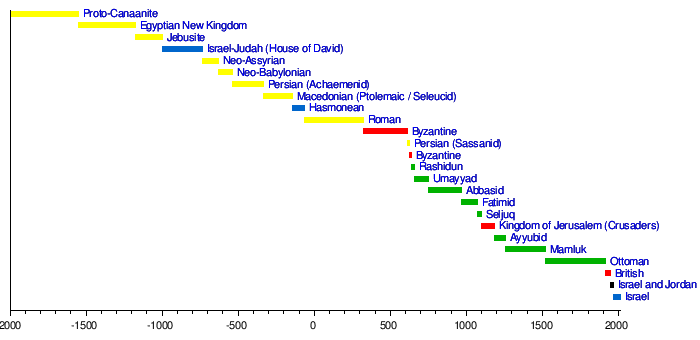
In the 2nd century BCE, the Greek king Antiochus IV Epiphanes (ruler of the Seleucid Empire) tried to eradicate Judaism in favor of Hellenistic religion. This provoked the 174–135 BCE Maccabean Revolt led by Judas Maccabeus, whose victory is celebrated in the Jewish festival of Hanukkah. Under the leadership of his brother, Simon Maccabaeus, the Hasmonean dynasty of priest-kings ruled Judea with the Pharisees, Sadducees and Essenes as the principal religious and sociopolitical parties. Between 140 and 116 BCE, the dynasty ruled semi-autonomously from the Seleucids in the region of Judea. In 125 BCE the Hasmonean King John Hyrcanus subjugated Edom and forcibly converted the population to Judaism. This is the only known case of forced conversion to Judaism. From 110 BCE, with the Seleucid empire disintegrating, the dynasty became fully independent and expanded into the neighboring regions of Galilee, Iturea, Perea, Idumea (Edom) and Samaria.
Roman and Byzantine Rule:
The Hasmonean Kingdom was in the midst of a civil war between two warring brothers: Hyrcanus II who supported the Pharisee faction against Aristobulus II and the Sadducees. Hyrcanus II and Aristobulus II became pawns in a proxy war between Julius Caesar and Pompey the Great that ended with the kingdom under the supervision of the Roman governor of Syria (64 BCE). The deaths of Pompey (48 BCE) and Caesar (44 BCE), and the related Roman civil wars relaxed Rome's grip on Israel, allowing a brief Hasmonean resurgence backed by the Parthian Empire. This short independence was rapidly crushed by the Romans under Mark Antony and Octavian.
The installation of Herod the Great, descended from Edom (a descendent of Esau, the eldest son of the Jewish patriarch Isaac, the son of Abraham and Sarah), as king in 37 BCE made Israel a Roman client state, ending the Hasmonean dynasty. In 44 CE, Rome installed the rule of a Roman procurator side by side with the rule of the Herodian kings. From 37 BCE to 6 CE, the Herodian dynasty, ruled Judea. Herod considerably enlarged the temple, making it one of the largest religious structures in the world. It was in this period that Rabbinical Judaism began to assume popular prominence over the Temple priesthood.
Jerusalem became the birthplace of Early Christianity in the 1st century CE. According to the New Testament, it is the location of the Crucifixion, the Resurrection and the Ascension of Jesus Christ. It was in Jerusalem that, according to the Acts of the Apostles, the Apostles of Christ received the Holy Spirit at Pentecost and first began preaching the Gospel and proclaiming his resurrection.
In 66 CE the Jewish population rebelled against the Roman Empire in what is now known as the Great Revolt, naming their new kingdom "Israel". Most Christians, at this time a sub-sect of Judaism, removed themselves from Judea. Roman legions under future emperor Titus reconquered and subsequently destroyed much of Jerusalem in 70 CE. The Second Temple was burnt and all that remained was the great external (retaining) walls supporting the Esplanade on which the Temple had stood, a portion of which has become known as the Western Wall. The events were described by the Jewish leader/historian Josephus, including the desperate defence of Jotapata, the siege of Jerusalem (69-70 CE), and heroic last stand at Massada (72-73 CE).
After the end of this revolt, Jews continued to live in Jerusalem in significant numbers, and were allowed to practice their religion, only if they paid the Jewish Tax. The rabbinical/Pharisee movement led by Yochanan ben Zakai, who opposed the Sadducee temple priesthood, made peace with Rome and survived. But in 131 CE, the Roman Emperor Hadrian visited the Jerusalem and decided to to rebuild it as a city dedicated to Jupiter and renamed it "Aelia Capitolina". Hadrian constructed a Temple of Jupiter on the site of the former Jewish temple. He placed restrictions on some Jewish practices, which caused a revolt by the Judeans, led by the Jewish leader Simon Bar Kokhba. The Christians refused to participate in the revolt and from this point the Jews regarded Christianity as a separate religion.
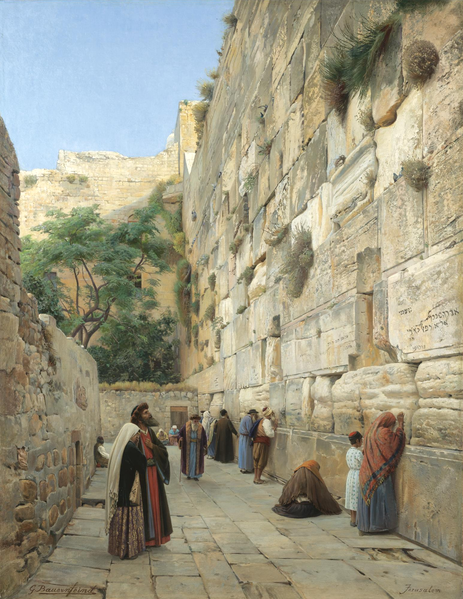 Bar Kokhba is proclaimed as the Messiah by Rabbi Akiva ben Joseph. The Jews renamed the country "Israel" and controlled the city for three years. The Bar Kokhba revolt probably caused more trouble for the Romans then the more famous (and better documented) Great Revolt. Hadrian responded with overwhelming force, putting down the rebellion, killing as many as a half million Jews, and large numbers of prisoners of war were sold as slaves throughout the Empire.
Bar Kokhba is proclaimed as the Messiah by Rabbi Akiva ben Joseph. The Jews renamed the country "Israel" and controlled the city for three years. The Bar Kokhba revolt probably caused more trouble for the Romans then the more famous (and better documented) Great Revolt. Hadrian responded with overwhelming force, putting down the rebellion, killing as many as a half million Jews, and large numbers of prisoners of war were sold as slaves throughout the Empire.
Hadrian resettled the city as a Roman colonia. Jews were banned from living in Jerusalem itself (a ban which persisted until the Arab conquest) and the Roman province was renamed Palaestina ("Palestine"). Jews were forbidden to enter the city but for a single day of the year, Tisha B'Av (the Ninth of Av), the fast day on which Jews mourn the destruction of both Temples. For the next 150 years, the city remained a relatively unimportant pagan Roman town.
Before the Bar-Kochba uprising, an estimated 2/3 of the population of Gallilee and 1/3 of the coastal region were Jewish. However, persecution and the economic crisis that affected the Roman empire in the 3rd century led to further Jewish migration from Palestine to the more tolerant Persian Sassanid Empire, where a prosperous Jewish community existed in the area of Babylon. Nevertheless, there was a continuous small Jewish presence and Galilee became its religious center.
Early in the 4th century, Constantine the Great becomes the first Roman Emperor to convert to Christianity. Constantine issues the Edict of Milan in 313, which proclaimed religious tolerance of all religions throughout the empire. Constantinople becomes the capital of the East Roman Empire and Christianity is adopted as the official religion. The name Jerusalem was restored, a significant wave of Christian immigration to the city begins, and it became a Christian city. Jews were still banned from living in Jerusalem, but were allowed to visit, and it is in this period that the surviving Western Wall of the temple became sacred.
In 326 CE, Emperor Constantine's mother Saint Helena visits Jerusalem and orders the destruction of Hadrian's temple to Venus which had been built on Calvary. Accompanied by Macarius of Jerusalem, the excavation reportedly discovers the True Cross, the Holy Tunic and the Holy Nails.
The Roman Empire split and the region became part of the East Roman Empire, known as the Byzantine Empire. Under the Byzantines, Christianity was dominated by the (Greek) Orthodox Church. In the 5th century, The Western Roman Empire collapsed leading to Christian migration into Palestine and development of a Christian majority. Jews numbered 10–15% of the population. Judaism was the only non-Christian religion tolerated. Sacred Jewish texts written in Israel at this time are the Gemara (400 CE), the Jerusalem Talmud (500 CE) and the Passover Haggadah.
Back to Menu  |
Middle Ages
In 611 CE, Sassanid Persia invaded the Byzantine Empire and, after a long siege, Chosroes II captured Jerusalem (614 CE) with Jewish help, including possibly the Jewish Himyarite Kingdom in Yemen. Jews were left to govern Jerusalem until in 617 CE, when the Persians took over. The Byzantine Emperor, Heraclius, promised to restore Jewish rights and received Jewish help in defeating the Persians, but he soon reneged on the agreement after reconquering Palestine by issuing an edict banning Judaism from the Byzantine Empire.
Arab Rule:
According to Muslim tradition, in 620 CE Muhammed flew from Mecca to the "farthest mosque", whose location is considered to be the Temple Mount, returning the same night. In 634-636 CE the Arabs conquered Palestine, ending the Byzantine ban on Jews living in Jerusalem. Over the next few centuries, Islam replaced Christianity as the dominant religion of the region.
From 636 CE until the beginning of the Crusades, Palestine was ruled first by Medinah-based Rashidun Caliphs, then by the Damascus-based Umayyad Caliphate, and after that the Baghdad-based Abbasid Caliphs. In 691 CE Ummayad Caliph Abd al-Malik constructed the Dome of the Rock shrine on the Temple Mount, becoming the world's first great work of Islamic architecture.
The Temple Mount, known as Haram Ash-Sharif in the Islamic world, had remained unbuilt for 600 years since Titus's destruction of Herod's Temple in 70 CE. Jews consider it to contain the Foundation Stone, which is the holiest site in Judaism. A second building, the Al-Aqsa Mosque, was also erected on the Temple Mount in 705 CE.
After the expansion of Islam into the Middle East from the Arabian Peninsula, Jews, along with Christians and Zoroastrians, typically had the legal status of dhimmi. As such, they were accorded rights and were not persecuted for their religious beliefs unlike most parts of Medieval Europe, but were not accorded full privileges such as those accorded to Muslims. Between the 7th and 11th centuries, Jewish scribes, called the Masoretes and located in Galilee and Jerusalem, established the Masoretic Text, the final text of the Hebrew Bible.
The Holy Crusades:
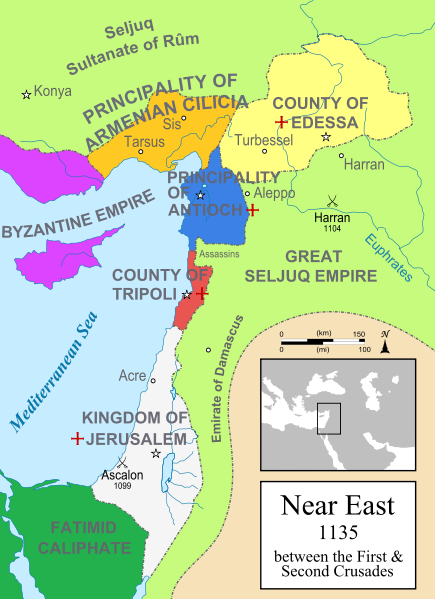 During the Crusades, both Muslims and Jews in Palestine were indiscriminately massacred or sold into slavery. The murder of Jews began during the Crusaders' travels across Europe and continued in the Holy Land. Ashkenazi orthodox Jews still recite a prayer in memory of the death and destruction caused by the Crusades.
During the Crusades, both Muslims and Jews in Palestine were indiscriminately massacred or sold into slavery. The murder of Jews began during the Crusaders' travels across Europe and continued in the Holy Land. Ashkenazi orthodox Jews still recite a prayer in memory of the death and destruction caused by the Crusades.
The Kingdom of Jerusalem was a Catholic kingdom established in the Levant in 1099 after the First Crusade. It lasted nearly two hundred years, from 1099 until 1291 when the last remaining possession, Acre, was destroyed by the Mamluks.
At first the kingdom was little more than a loose collection of towns and cities captured during the crusade. Later kings expanded its size so that at its height in the mid-12th century, the kingdom roughly encompassed the territory of modern-day Israel, Lebanon, and the modern day West Bank, formerly the heart of ancient Israel (Judea and Samaria). It extended from Lebanon in the north to the Sinai Desert in the south, and into modern Jordan and Syria in the east. There were attempts to expand the kingdom into Fatimid Egypt. Its kings held a certain amount of authority over the other crusader states: Tripoli, Antioch, and Edessa.
In Jerusalem, the royal family lived firstly on the Temple Mount, before the foundation of the Knights Templar, and later in the palace complex surrounding the Tower of David; there was another palace complex in Acre. During Baldwin's reign, he repopulated Jerusalem with Franks and native Christians.
It has been estimated by some scholars that there were at most 120,000 Franks and 100,000 Muslims living in the cities, with another 250,000 Muslim and Eastern Christian peasants in the countryside. The crusaders accounted for 15–25% of the total population.
Many customs and institutions were imported from the crusaders' original homelands in Western Europe, and there were close familial and political connections with the West throughout the kingdom's existence. As a relatively minor kingdom it often lacked financial and military support from Europe. The kingdom had closer ties to the neighboring Kingdom of Armenia and the Byzantine Empire, from which it inherited oriental qualities, as well as being influenced by pre-existing Eastern institutions. Socially, the Frankish inhabitants were dominant and the Muslims and Eastern Orthodox Christians were a marginalized lower class. Greeks, Syrians, and Jews continued to live as they had before, subject to their own laws and courts, with their former Muslim overlords simply replaced by the crusaders; Muslims now joined them at the lowest level of society.
At first the Muslim world held little concern for the fledgling kingdom, but as the 12th century progressed, the kingdom's Muslim neighbors were united by Nur ad-Din Zangi and Saladin, who vigorously began to recapture lost territory. Jerusalem itself was lost to Saladin in 1187, and by the 13th century the Kingdom was reduced to a few cities along the Mediterranean coast. In this period, the kingdom, sometimes referred to as the "Kingdom of Acre", was ruled by the Lusignan dynasty of the crusader Kingdom of Cyprus, and ties were strengthened with Tripoli, Antioch, and Armenia.
Mamluk Rule:
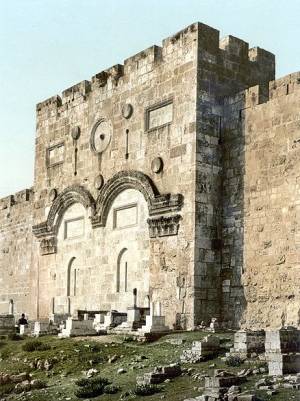 The kingdom was soon increasingly dominated by the Italian city-states of Venice and Genoa, as well as the imperial ambitions of the Holy Roman Emperors. From 1260 to 1291 the area became the frontier between Mongol invaders (occasional Crusader allies) and the Mamluks of Egypt. The conflict impoverished the country and severely reduced the population. Sultan Qutuz of Egypt eventually defeated the Mongols in the Battle of Ain Jalut (near Ein Harod).
The kingdom was soon increasingly dominated by the Italian city-states of Venice and Genoa, as well as the imperial ambitions of the Holy Roman Emperors. From 1260 to 1291 the area became the frontier between Mongol invaders (occasional Crusader allies) and the Mamluks of Egypt. The conflict impoverished the country and severely reduced the population. Sultan Qutuz of Egypt eventually defeated the Mongols in the Battle of Ain Jalut (near Ein Harod).
The Egyptian Mamluk sultans Baibars and al-Ashraf Khalil eventually reconquered all the remaining crusader strongholds, culminating in the destruction of Acre in 1291, thereby ending the Crusades. The collapse of the Crusades was followed by increased persecution and expulsions of Jews in Europe. During the Black Death, many Jews were murdered after being accused of poisoning wells. Most of the expelled Spanish Jews moved to North Africa, Poland, to the Ottoman Empire and to Palestine.
The Mamluks ruled Palestine until 1517. In Hebron, Baibars banned Jews from worshiping at the Cave of the Patriarchs (the second holiest site in Judaism) until Palestine's conquest by the Turkish Sultan Selim II of the Ottoman Empire in 1516. Thereafter, Palestine remained a province of Syria for the next four centuries. In 1541 CE, the Muslims seal The Golden Gate entrance of the walls of Jerusalem to prevent Jewish Messiah's entrance.
Ottoman Turkish Rule:
The Ottoman Empire was, in principle, tolerant towards Christians and Jews (the "Ahl Al-Kitab", or "People of the Book", according to the Qur'an), according to the Sharia law. Such tolerance was subject to a non-Muslim tax, the Jizya. Likewise, in accordance with the Muslim dhimmi system, Christians and Jews were guaranteed limited freedoms, but were treated as second-class citizens. Christians and Jews were not considered equals to Muslims. They were forbidden to carry weapons or ride atop horses, their houses could not overlook those of Muslims, and their religious practices would have to defer to those of Muslims, in addition to various other legal limitations. Nonetheless, Jewish civilization grew and thrived with the Ottoman rule. The Ottoman Empire served as a refuge for Spanish Jews who had been expelled from the Kingdom of Spain and its territories and possessions, especially after the fall of Muslim Spain in 1492 and Edict of Expulsion.
Back to Menu  |
Modern Israel
In 1844, Jews constituted the largest population group in Jerusalem and by 1890 an absolute majority in the city, but as a whole the Jewish population made up far less than 10% of the region. By 1890, Palestine was populated mainly by Muslim and Christian Arabs, as well as Jews, Greeks, Druze, Bedouins and other minorities. The small Jewish population was concentrated in the Four Holy Cities.
The Zionist Movement:
style="margin-bottom: 15px; float: right; margin-left: 25px; " width="375" height="330"The first modern Jewish settlement in Palestine, Petah Tikva, was founded in 1878, followed by Rishon LeZion (1882). Other settlements were established by members of the Bilu and Hovevei Zion ("Love of Zion") movements. This was accompanied by a revival of the Hebrew language. Zionism attracted Jews of all kinds: religious, secular, nationalists and left-wing socialists. Socialists aimed to reclaim the land by becoming laborers and forming collectives. In Zionist history, the different waves of Jewish settlement are known as aliyah. During the First Aliyah, between 1882 and 1903, approximately 35,000 Jews moved to Palestine in the wake of escalting persecution and anti-Semitism in Russia and eastern Europe.
In 1896, Theodor Herzl published Der Judenstaat (The Jewish State) in which he asserted that the solution to growing antisemitism in Europe (the so-called "Jewish Question") was to establish a Jewish state. In 1897, the Zionist Organization was founded and the First Zionist Congress proclaimed its aim "to establish a home for the Jewish people in Palestine secured under public law." However, Zionism was regarded with suspicion by the Ottoman rulers and was unable to make major progress.
Between 1904 and 1914, around 40,000 Jews settled in Palestine (the Second Aliyah'). In 1908 the Zionist Organization set up the Palestine Bureau in Jaffa and began to adopt a systematic Jewish settlement policy in Palestine. Migrants were mainly from Russia (which then included Poland), escaping persecution. The first kibbutz, Degania, was founded by Russian socialists in 1909. The first entirely Hebrew-speaking city, Ahuzat Bayit was established in 1909 (later renamed Tel Aviv). Hebrew newspapers and books were published, and Jewish political parties and workers organizations were established.
During World War I, Jews fought on both sides with more than 100,000 Jews served in the German Army. In Britain, the government sought and received the support of British Jews for the war effort. There was already sympathy for the aims of Zionism in the British government, including the Prime-Minister Lloyd-George. In late 1917, as the British Army (including a mainly Zionist Jewish Legion)drove the Turks out of Palestine, the British foreign minister, Lord Balfour sent a letter to Lord Rothschild. The letter subsequently became known as the Balfour Declaration of 1917 which supported the establishment in Palestine of a national home for the Jewish people.
The British Mandate of Palestine:
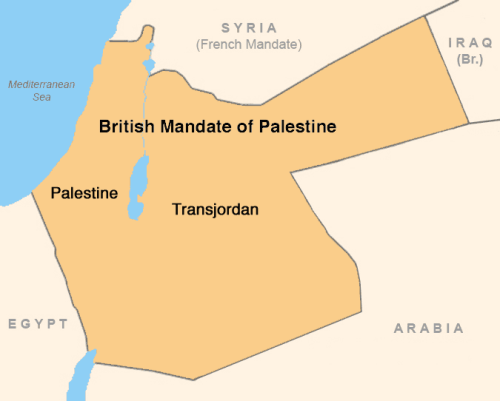 The British Mandate (in effect, British rule) of Palestine, including the Balfour Declaration, was confirmed by the League of Nations in 1922 and came into effect in 1923. The boundaries of Palestine were drawn by the British and included modern Jordan. Britain signed an additional treaty with the USA (which did not join the League of Nations) in which the USA endorsed the terms of the Mandate. The British Mandate permitted the Jewish Agency for Palestine to oversee Jewish immigration into Palestine and land purchases from the local Arabs. During the whole interwar period, the British, appealing to the terms of the Mandate, rejected the principle of majority rule or any other measure that would give the Arab majority control over the government of Palestine.
The British Mandate (in effect, British rule) of Palestine, including the Balfour Declaration, was confirmed by the League of Nations in 1922 and came into effect in 1923. The boundaries of Palestine were drawn by the British and included modern Jordan. Britain signed an additional treaty with the USA (which did not join the League of Nations) in which the USA endorsed the terms of the Mandate. The British Mandate permitted the Jewish Agency for Palestine to oversee Jewish immigration into Palestine and land purchases from the local Arabs. During the whole interwar period, the British, appealing to the terms of the Mandate, rejected the principle of majority rule or any other measure that would give the Arab majority control over the government of Palestine.
Between 1919 and 1923, 40,000 Jews arrived in Palestine, mainly escaping the post-revolutionary chaos of Russia (3rd Aliyah). The combination of Jewish immigration and the terms of the Mandate led to Arab rioting in 1920 and 1921. In response, the British authorities enacted a system of immigration quotas. Arab attacks on isolated Jewish settlements and the British failure to protect them led to the creation of the Haganah ("Defense"), a mainly socialist underground Jewish militia dedicated to defending Jewish settlements.
The 1929 Palestine riots (also known as the "Western Wall Uprising"), during which 116 Arabs and 133 Jews were killed, led Ze'ev Jabotinsky to create a right-wing militia group called the Irgun (also known as "Etzel"). Despite Arab opposition, the the emergence of anti-Semitic fascist regimes across Europe and the increased persecution of European Jews in the 1930s led to a marked increase in Jewish immigration.
In 1933, the Nazis negotiated the Ha'avara Agreement, under which 50,000 Jews and $100 million of their assets would be moved to Palestine. In Palestine, Jewish immigration helped the economy to flourish. With the completion of the port at Haifa and its oil refineries, significant industry was added to the predominantly agricultural Palestinian economy. With the British enforcing quotas and the situation in Europe increasingly desperate, Jews were forced to resort to illegal immigration. Jewish refugees arrived in secret by sea, or, to a lesser extent, overland through Syria.
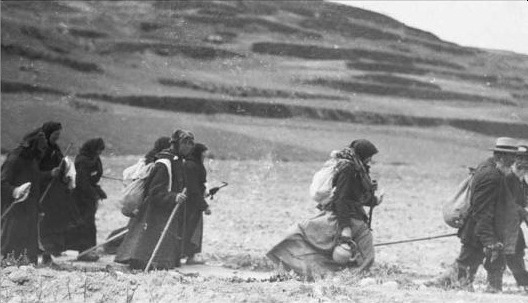 Increased Jewish immigration contributed to the large-scale Arab Revolt in Palestine (1936–1939), a largely nationalist uprising directed at ending British rule. With war in Europe increasingly likely, the British tried to placate the Arab population of Palestine. The White Paper of 1939, stated that with over 450,000 Jews having now arrived in Palestine, the Balfour Declaration aim of "a national home for the Jewish people" had been achieved. In March 1940, the British High Commissioner for Palestine issued an edict banning Jews from purchasing land in 95% of Palestine.
Increased Jewish immigration contributed to the large-scale Arab Revolt in Palestine (1936–1939), a largely nationalist uprising directed at ending British rule. With war in Europe increasingly likely, the British tried to placate the Arab population of Palestine. The White Paper of 1939, stated that with over 450,000 Jews having now arrived in Palestine, the Balfour Declaration aim of "a national home for the Jewish people" had been achieved. In March 1940, the British High Commissioner for Palestine issued an edict banning Jews from purchasing land in 95% of Palestine.
During World War II, the Jewish Agency called on Palestine's Jewish youth to volunteer for the British Army (both men and women). The Etzel supported this policy. Over a million Jews served in every branch of the allied armies, mainly in the Soviet and US armies. A small group (with about 200 activists), dedicated to Jewish resistance to the British administration in Palestine, broke away and formed the "Lehi" (Stern Gang), led by Avraham Stern. At about the same time, Yitzhak Shamir escaped from the camp in Eritrea where the British were holding Lehi activists without trial, taking command of the Lehi.
In 1941 there was a pro-Axis coup in Iraq, accompanied by massacres of Jews. In 1942 Nazi troops under Rommel, popularly known as the Desert Fox, advanced into Egypt with the intention of occupying Palestine, exterminating the Jewish population and linking up with Nazi forces in Russia. The Zionist community made plans for a last stand. Between 1939 and 1945, 6 million Jews in Nazi-occupied Europe were murdered. Almost a quarter of those killed were children. The Holocaust had an overwhelmingly decisive impact on the Jewish world (and beyond). Despite British efforts to curb immigration, during the 14 years of the Aliyah Bet—the code name given to illegal and clandestine immigration by Jews in violation of British White Paper of 1939 restrictions—over 110,000 Jews secretly entered Palestine.
The State of Israel:
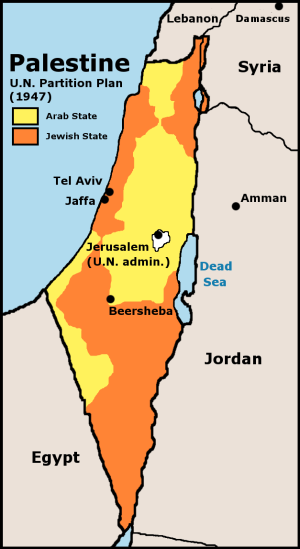 The British Empire was severely weakened by World War II. In an effort to win independence, Zionists now waged a bitter guerilla war against the British. The underground Jewish militias, the Haganah, formed an alliance called the Jewish Resistance Movement with the Etzel and Stern Gang to fight the British. In July 1946, Etzel bombed the British Military Headquarters in the King David Hotel killing 92 people. In the US, Congress criticized British handling of the situation and delayed loans which were vital to British post-war recovery. By 1947 the British were ready to refer the Palestine problem to the United Nations.
The British Empire was severely weakened by World War II. In an effort to win independence, Zionists now waged a bitter guerilla war against the British. The underground Jewish militias, the Haganah, formed an alliance called the Jewish Resistance Movement with the Etzel and Stern Gang to fight the British. In July 1946, Etzel bombed the British Military Headquarters in the King David Hotel killing 92 people. In the US, Congress criticized British handling of the situation and delayed loans which were vital to British post-war recovery. By 1947 the British were ready to refer the Palestine problem to the United Nations.
To decide on how to deal with Palestine the United Nations appointed a committee, the United Nations Special Committee on Palestine (UNSCOP). In September 1947, one month after the Partition of India, UNSCOP recommended the partition in Palestine, a suggestion ratified by the UN General Assembly on November 29, 1947. The UN resolution stipulated the establishment of two separate states, one Arab and one Jewish, with the city of Jerusalem to be under the direct administration of the United Nations.
On May 14, 1948, the last British forces left Haifa. The Jewish Agency, led by David Ben-Gurion, declared the establishment of the State of Israel, in accordance with the 1947 UN Partition Plan. Ben-Gurion became Prime Minister of the new state. Both superpower leaders, U.S. President Harry S. Truman and Soviet leader Joseph Stalin, immediately recognized the new state. At this time the Jewish population of Palestine was approximately 650,000, the Arab population around 1.2 million. Neighboring Arab states invaded the next day in support of the Palestinian Arabs resulting in the 1948 Arab-Israeli war.
By the late 1940s, conditions of the Arab Jews in many Muslim countries were rapidly worsening through a combination of growing Arab nationalism due to European occupation; Nazi influence in the Axis controlled parts of North Africa; and the conflict in the British Mandate of Palestine. The situation came to a head after 1948 Arab-Israeli war. Many Arab states instituted formal discriminatory laws against their Jewish populations. Within a few decades of the founding of Israel in 1948, most Jews had either been forced out, or voluntarily left Muslim lands, most for the newly created Jewish state. In 1945, by some estimates, there were 1 million Jews living in communities throughout the Arab world. Today, there are fewer than 8,000.
Since 1948, Israel has fought a series of wars with neighboring Arab states, and has occupied territories, including the West Bank, Sinai Peninsula, Gaza Strip and the Golan Heights, beyond those delineated in the 1949 Armistice Agreements. Portions of these territories, including Jerusalem, have been annexed by Israel but the border with the neighboring West Bank is still not formally defined, as a result of the complex and unresolved political situation. Israel has signed peace treaties with Egypt and Jordan, but efforts by elements on both sides of the Israeli–Palestinian conflict to solve the problem diplomatically have so far met with little or no success. Former Prime Minister Yitzhak Rabin pushed for a two-state solution in the 1990s, but was assassinated by a Jewish nationalist.
Back to Menu  |
Present Day Israel:
The State of Israel is a developed country and a representative democracy with a parliamentary system and universal suffrage. The Prime Minister serves as head of government and the Knesset serves as Israel's unicameral legislative body. The economy, based on the nominal gross domestic product, was the 42nd-largest in the world in 2010 and it has one of the highest life expectancies in the world. Although it is not recognized internationally as such, Jerusalem is the country's capital.
Economy:
The Economy of Israel is a technologically advanced market economy, consisting of a rapidly developing high-tech sector, which is backed by a strong Venture capital industry. The high concentration of high-tech industries in Israel gave it the nickname "Silicon Wadi", which is considered second in importance only to its Californian counterpart. Israel possesses a substantial service sector and the Israel diamond industry is one of the world's centers for diamond cutting and polishing. It is also a world leader in software and telecommunication development. The major industrial sectors include metal products, electronic and biomedical equipment, processed foods, chemicals, and transport equipment. Relatively poor in natural resources, Israel depends on imports of petroleum, coal, food, uncut diamonds and production inputs.
In In 2010, Israel had the 42nd-highest gross domestic product, and that same year Israel joined the OECD, which praised Israel's scientific and technological progress and described it as having "produced outstanding outcomes on a world scale." The country is ranked 3rd in the region on the World Bank's Ease of Doing Business Index as well as in the World Economic Forum's Global Competitiveness Report. It has the second-largest number of startup companies in the world (after the United States) and the largest number of NASDAQ-listed companies outside North America.
Demographics:
The population of Israel, defined by the Israel Central Bureau of Statistics to include all citizens or nationals, but not foreign workers, within Israel itself and in the Israeli settlements in the occupied territories, was estimated in 2011 to be 7.75 million people, of whom 5.82 million are Jewish. Arabs form by far the country's second-largest ethnic group, which includes Muslims and Christians. Other minorities are Druze, Circassians and Samaritans. According to a 2008 census, 1.58 million Arabs live in East Jerusalem and the Golan Heights.
Israel was established as a homeland for the Jewish people and is often referred to as a Jewish state. The country's Law of Return grants all Jews and those of Jewish lineage the right to Israeli citizenship. Just over three quarters, or 75.5%, of the population are Jews from a diversity of Jewish backgrounds. Approximately 68% of Israeli Jews are Israeli-born, 22% are immigrants from Europe and the Americas, and 10% are immigrants from Asia and Africa (including the Arab World). Jews who left or fled Arab and Muslim lands and their descendants, known as Mizrahi Jews, constitute approximately 50% of Jewish Israelis. Jews from Eastern Europe and the former Soviet Union and their Israeli-born descendants, or Ashkenazi Jews, form most of the rest of the Jewish population.
Israel has two official languages, Hebrew and Arabic. Hebrew is the primary language of the state and is spoken by the majority of the population, and Arabic is spoken by the Arab minority. Many Israelis communicate reasonably well in English, as many television programs are broadcast in this language and English is taught from the early grades in elementary school. As a country of immigrants, many languages can be heard on the streets.
Israel and the Palestinian territories comprise the major part of the Holy Land, a region of significant importances to all Abrahamic religions—Jews, Christians, Muslims and Baha'is. The religious affiliation of Israeli Jews varies widely: 55% over the age of 20 say they are "traditional", while 20% consider themselves "secular Jews", 17% as "Religious Zionists", and 8% as "Haredi Jews". Only 5% of Israel's population in 1990, the ultra-Orthodox, or Haredim, are expected to represent more than one-fifth of Israel's Jewish population in 2028. Making up 16% of the population, Muslims constitute Israel's largest religious minority. About 2% of the population are Christian and 1.5% are Druze.
Culture:
Israel's diverse culture stems from the diversity of the population: Jews from around the world have brought their cultural and religious traditions with them, creating a melting pot of Jewish customs and beliefs. Israel is the only country in the world where life revolves around the Hebrew calendar. Work and school holidays are determined by the Jewish holidays, and the official day of rest is Saturday, the Jewish Sabbath. Israel's substantial Arab minority has also left its imprint on Israeli culture in such spheres as architecture, music, and cuisine.
Tourism in Israel:
Tourism in Israel, especially religious tourism, is one of the country's major sources of income, with 3.45 million tourist arrivals in 2010. Israel offers a plethora of historical and religious sites, beach resorts, archaeological tourism, heritage tourism and ecotourism. With over 200 museums, Israel has the highest number of museums per capita in the world, with millions of visitors annually The most popular paid tourist attraction is Masada.
Jerusalem is the most-visited city in Israel. One of the oldest cities in the world, it is the capital, and largest city of Israel if the area and population of occupied East Jerusalem are included. It is a holy city to the three major Abrahamic religions-Judaism, Christianity and Islam, and hosts a myriad of historical, archaeological, religious and sundry other attractions. It is the location of: the Old City of Jerusalem, the Temple Mount, the Western Wall, the Dome of the Rock and Al-Aqsa Mosque, the Mount of Olives, Church of the Holy Sepulchre, the City of David, and Mt. Zion, the traditional resting place of King David.
The country abounds in archaeological tells. Tel Be'er Sheva, Tel Hazor and Tel Megiddo (the site of Armageddon) were recognized as UNESCO World Heritage Sites. They exhibit elaborate water systems that are among the earliest in the world.
Israel has 67 national parks and 190 nature reserves. Some of them are located at archaeological sites. Beit Guvrin-Maresha is a large archaeological complex in the Judean Mountains. Tzippori is an ancient Roman town with elaborate mosaics and a historic synagogue. Ein Gedi, a desert spring, is a starting point for tours to Masada and the Dead Sea.
A network of kibbutzim dot the countryside, some offering guesthouses and country lodging. They are undergoing a process of modernization and re-organization. Well known in Israel for great contributions to Israeli history, politics, army, and Zionism.
West Bank tourism has been administered by Israel since the beginning of its occupation in 1967. Today, The Palestinian Authority and Israeli tourism ministries work together on tourism in the Palestinian territories in a Joint Committee on Tourism. Popular sites include: Bethlehem, Burial place of the matriarch Rachel and birthplace of King David and of Jesus; Herodium, a fortress built by Herod the Great; Hebron—the second-holiest city in Judaism and the place where the Tomb of the Patriarchs and Matriarchs; and Jericho.
Eilat is located in the Gulf of Aquaba, one of the most popular diving destinations in the world. The coral reefs along Eilat's coast remain relatively pristine and the area is recognized as one of the prime diving locations in the world. The Red Sea is famous for its sunny beaches and hotel resorts; a popular destination for SCUBA diving and water sports.
Jewish Cuisine
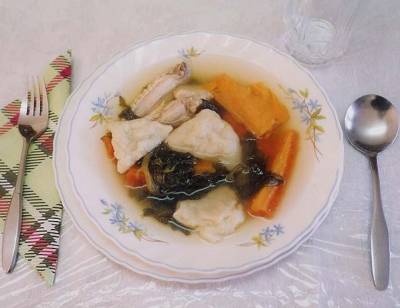 Jewish cuisine is a collection of foods, and methods of their cooking and serving, that is unique to the Jews. Its uniqueness serves to communicate Jewish cultural and social identity. This identity is derived from those elements of food selection, preparation and service that have been persistent influences in Jewish cooking through their history: kashrut (dietary laws), korbanot (sacrificial offerings), Shabbat (day when cooking is prohibited), and Jewish Festivals.
Jewish cuisine is a collection of foods, and methods of their cooking and serving, that is unique to the Jews. Its uniqueness serves to communicate Jewish cultural and social identity. This identity is derived from those elements of food selection, preparation and service that have been persistent influences in Jewish cooking through their history: kashrut (dietary laws), korbanot (sacrificial offerings), Shabbat (day when cooking is prohibited), and Jewish Festivals.
All these are religious practices written down in the Torah (Hebrew Bible), elaborated in the Talmud (Jewish Oral Law), and adapted by the community rabbis to the many local economic, agricultural, and culinary influences of the Jewish diaspora communities that have existed since its creation by Yemenite Jews just before the destruction of First Temple. Laws of kashrut, sacrifices, Shabbat and holy days provide the foundational elements in the cuisine, while geographic dispersion has led to a diversity of their application.
The more commonly known geographic regions are: Ashkenazi (Central and Eastern European), Sephardic (descendants of the Iberian Jews, including Italian, Greek, Turkish and Balkan; and North African communities, including Moroccan, Tunisian, Algerian and Libyan), Mizrahi (Lebanese, Syrian, Kurdistan and Iraqi), Persian Jewish, Yemenite Jewish, Indian Jewish, and Latin-American Jewish communities. There are also distinctive dishes from Jewish communities ranging from Ethiopia to the Bukharan Jews of Samarkand in Central Asia.
Most of the dishes cooked by Jewish people of Eastern European origin are akin to those of the nations among whom they dwelled, and in much of Europe (including most of the English-speaking world) is the dominant style associated with "Jewish cooking"; substitutions were made to accommodate the dietary laws. Hence, dishes which Gentiles make with pork are made with veal or chicken; chicken fat (or, more modernly, hydrogenated vegetable oil) is used in place of lard. Thus the kasha and blintzes of the Russian Jews, the mamaliga of the Romanians, and the paprika of the Hungarians, are dishes adopted by the Jews from their gentile neighbors. Only on religious and ceremonial occasions did they cook special holiday Jewish dishes.
In the United States, in particular, Jewish cooking evolved in ways that illuminate changes in the role of Jewish women and the Jewish home.
Israeli Cuisine:
 Since the establishment of the State of Israel in 1948, and particularly since the late 1970s, an emerging Israeli "fusion cuisine" has developed. Israeli cuisine has adopted, and continues to adapt, elements of various styles of Jewish
cuisine, particularly the Mizrahi, Sephardic, and Ashkenazi styles of cooking. It incorporates many foods traditionally eaten in Middle Eastern and Mediterranean cuisines, and foods such as falafel, hummus, shakshouka, couscous, and za'atar are now thought to be synonymous with Israeli cuisine.
Since the establishment of the State of Israel in 1948, and particularly since the late 1970s, an emerging Israeli "fusion cuisine" has developed. Israeli cuisine has adopted, and continues to adapt, elements of various styles of Jewish
cuisine, particularly the Mizrahi, Sephardic, and Ashkenazi styles of cooking. It incorporates many foods traditionally eaten in Middle Eastern and Mediterranean cuisines, and foods such as falafel, hummus, shakshouka, couscous, and za'atar are now thought to be synonymous with Israeli cuisine.
Other influences on cuisine are the availability of foods common to the Mediterranean region, especially certain kinds of fruits and vegetables, dairy products and fish; the distinctive traditional dishes prepared at holiday times; the tradition of keeping kosher, which affects the preparation and availability of specific foods; and food customs specific to Shabbat and different Jewish holidays, such as challah, jachnun, malawach, gefilte fish, cholent (hamin) and sufganiyot.
New dishes based on agricultural products such as oranges, avocados, dairy products and fish, and others based on world trends have been introduced over the years, and chefs trained abroad have brought in elements of other international cuisines.
Kosher:
The laws of keeping kosher (kashrut) have influenced Jewish cooking in two primary ways: by prescribing what foods are permitted and how food must be prepared. Certain foods, notably pork and shellfish, are forbidden; meat and dairy may not be combined, and meat must be ritually slaughtered and salted to remove all traces of blood. Observant Jews will eat only meat or poultry that is certified kosher. Today, kosher meats can be readily purchased from a butcher or supermarket that have already kashered. Since meat and dairy may not be combined, butter, milk and cream are not used in preparing dishes made with meat or intended to be served together with meat. Oil, pareve margarine, rendered chicken fat or non-dairy cream substitutes are used instead.
Shabbat Meal:
Each Jewish community has its traditional dishes, often revolving around specialties from their home country. Thus, a traditional Shabbat meal for Ashkenazi Jews might include roast beef, pot roast, or chicken; carrot tzimmes and potatoes; and a traditional Shabbat meal for Sephardi Jews would focus more on salads, stuffed vine leaves, couscous and other Middle Eastern specialties.
Episodes:
 |
AFRICAN: Wherever you are in Africa, no meal is complete without a starchy porridge known as fufu. |
 |
BRAZILIAN: An exuberant, colorful mix of Portuguese, African and native foods including some from the Amazon. |
 |
CHINESE: Two thirds of households own a wok and use it regularly, but not everyone knows how to use it properly. |
 |
EGYPTIAN: Beans are used extensively and creatively as a source of protein, fibre, and comfort. |
 |
ENGLISH: "Meat & three veg" originated in the UK with dishes like roast beef, steak and kidney pie, and many more. |
 |
FRENCH: The French have elevated food into an art form. Nowhere else is so much attention paid to what people are going to eat and how. |
 |
HUNGARIAN: A fusion of simple peasant food & the elegant, highly developed cuisine from the days of the Austro Hungarian Empire. |
 |
INDIAN: A vibrant, intensely colorful cuisine. Each region of India has its own style of cooking and distinct flavors. |
 |
INDONESIAN: One of the most vibrant and colorful cuisines in the world, full of intense flavor and varied textures. |
 |
ITALIAN: An long-awaited introduction to the kitchens and restaurants of Australia’s top Italian chefs and home cooks. |
 |
JAPANESE: Refined and elegant, its preparation and presentation honed over the centuries so its flavors are pure and delicate. |
 |
KOREAN: Some of the healthiest food on earth, with a near obsession with the fermented vegetable kimchi. |
 |
LEBANESE: Lebanese cuisine is generous and abundant, and this is some of the most exquisite food in the world. |
 |
MALTESE: The rocky island of Malta is home to some beautiful rustic recipes that sing of Mediterranean flavor and freshness. |
 |
MEXICAN: Authentic Mexican food is vibrant, spicy, delicious and fun. It varies according to which region its from. |
 |
MOROCCAN: One of the most cleverly balanced cuisines on earth; spices are used to enhance the flavor of dishes. |
 |
PAKISTANI: Full of marvelous and diverse dishes, it incorporates elements from its neighbors India, Afghanistan and Iran. |
 |
PERSIAN: From simple dips to hearty stews, food preparation is taken very seriously in Iran and is often a labor of love. |
 |
SOUTH AMERICAN: A fantastic fusion of culinary traditions from indigenous Indians, imported Africans, and the Spanish and Portuguese colonist. |
 |
SRI LANKAN: This beautiful spice island is a rich melting pot of every nationality that has visited and traded with it over the years. |
 |
SYRIAN: One of the highlights of Syrian food is mezza, a generous spread of small dishes and the prelude to even more food! |
 |
TURKISH: Nestled between Asia and Europe, Turkish food is an unique and exotic fusion with influences from many countries. |
Contact Us | Shop | Sitemap | Join Our Team | Investors | Advertise | Web Design Services
Community | Foodies' Choice | Meetup Groups | Chat | Blogs | Forums | Submit Your Site | Resources

